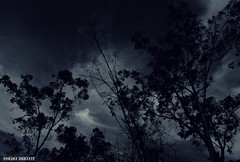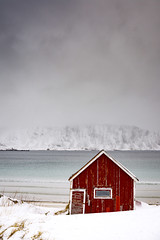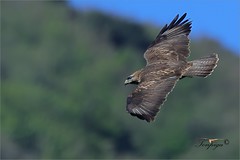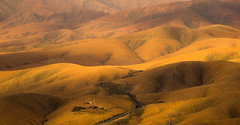The salt marsh that borders Cumberland goes through a noticeable change during the month of November. This is when the dominant salt marsh spartina grasses turn from green to gold. It’s this annual die back of mature spartina leaves and flowering stalks that produces the bio-mass needed to start the food chain in our coastal waters. Salt marshes are biologically among the richest natural areas on the planet. One acre of spartina produces five to seven times more protein than the same area of a Kansas wheat field. However, the nutritional value of spartina is not realized until it decomposes and becomes a major component of the organically rich mud seen in the marshes at low tide. So marsh mud, as miserable as it may seem to anyone trying to walk through it, is really wonderful stuff.
The decomposition process of spartina starts with bacteria. Among these are the purple sulfur bacteria that look like an oil slick on the surface of the water. This anaerobic life form actually lives under the mud that floats to the surface if the ground is disturbed and because of its oily appearance has been mistaken for pollution in some areas. As dead spartina is digested by bacteria, it mixes with algae in the marsh to become a nutrient rich soup known as detritus.
A great number of animals feed on this abundant food source with the smallest of these detritavores being protozoa and nematode worms that are so tiny they can be selective in eating certain types of bacteria and algae. However, larger animals like mud snails and fiddler crabs eat all components of the detritus soup. The largest detritavores in the marsh creeks are mullet. Large schools of these fish graze in the marshes over the summer but in the autumn when the water cools they move to warmer areas farther south. Menhaden are another schooling fish that feed directly on detritus in the marsh. The most commercially valuable detritavore we have around Cumberland are shrimp which actually spawn in the ocean but grow up in the salt marsh.
With such an abundance of grazing animals in these wetlands there are also a host of predators here to feed on them. Blue crabs will feed on fish and fiddler crabs but may be eaten themselves by river otters or bottle nosed dolphins. Dolphins feed mostly on fish though, and will chase schools of mullet and menhaden onto mud flats to capture them. Several kinds of predatory fish like sea trout and red fish go after the bait fish as well, and fishing for these popular game species is often rewarding around Cumberland.
There are many fish eating birds in the area such as ospreys, the only bird to dive totally feet first into the water to catch fish. Along the creek banks egrets and herons are able to grab and sometimes spear fish with their dagger like bills. Clapper rails and white ibis with their probe shaped bills are more adapted to feeding on mud snails and fiddlers. The most voracious predator of fiddler crabs though are probably the raccoons that roam the marshes at low tide eating them.
This, of course, is just a sampling of all the animal activity in our salt marshes. So when the green marsh grasses turn gold in November, I keep in mind what it could eventually lead to and when I trek into a wet, unstable salt marsh, I think of all the life forms below my feet that more often than not will end up well above my knees.













